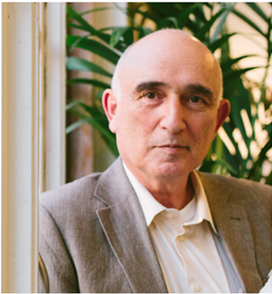 |
BioInfoMed’2024 Invited Speakers
Prof. Ovanes Mekenyan (Bulgaria)
|
Abstract
The recent efforts in predicting higher-tier endpoints (HTEs) using data for other chemicals defined two prediction approaches depending on the availability of structural analogues. In the first prediction approach, when similar tested chemicals are identified (HTE-I), different lines of evidence for justification of the similarity between the target and analogue(s) are presented. An alternative mechanistic approach (HTE-II) is proposed when there are no similar analogues for the target. Then, depending on the rate of abiotic and biotic transformations of the parent, one could predict its toxicity, simulating and estimating the effects of respective transformation products. Four scenarios are proposed based on abiotic (hydrolysis) and biotic (metabolic reaction) transformation rates. Once the respective transformation products are identified, their amounts are estimated. In all of the scenarios, if the parent`s structure possesses reactive functionalities, its amount after metabolization should also be considered. If the leftover amount of the target is negligible (e.g., 0.01%), one could assume that the parent structure will be fully exhausted and its accumulation after chronic exposure will not be expected. In this case, or if there are no identified functionalities in the parent`s structure that will react with the macromolecules, the ultimate toxicity of the target will be conditioned only by the effect and the quantities of its transformation products. A more conservative requirement with respect to the leftover parent could include non-toxicity and small amount criteria.
In addition, qualitative and quantitative algorithms for estimating the target`s toxicity are defined. With the first algorithm, the qualitative expression of the data of a toxic metabolite (e.g., “Positive”) is assigned to the parent chemical. On the other hand, the quantitative algorithm could be used to estimate the dose of the parent chemical that will not lead to the generation of toxic metabolites. This will result in a more adequate prediction of the parent toxicity and the possibility of estimating the margin of exposure being of high importance for industrial risk assessment purposes. The proposed approaches and methods for estimating parent toxicity based on metabolic relationships are described for predicting developmental and repeat dose toxicity. The repeat dose paradigm is verified by appropriate in vivo metabolic and toxicity testing.
Curriculum Vitae
Ovanes Mekenyan (born 1948, Bulgaria) is the head of Laboratory of Mathematical Chemistry (LMC) and Professor of Physical Chemistry at “Prof. Dr. Assen Zlatarov” University, Burgas, Bulgaria. He is an internationally recognized expert in the fields of mathematical chemistry and chemical informatics. Prof. Mekenyan has built algorithms, methods and software for 3D modeling and 3D screening of large chemical inventories (3D Informational technology) since 1980. He has introduced the molecular flexibility (4th dimension of chemical structures) and metabolic activation of chemicals in QSAR analysis and databasing. He is the principal developer of metabolic simulators for tissue and microbial biotransformations of chemicals. The LMC research staff of more than 35 scientists, managed by Prof. Mekenyan, is experienced in chemistry, biochemistry, physics, mathematics and software development.
Prof. Mekenyan has published about 200 papers (and 2 books) in internationally recognized journals. Awards granted to Prof. Ovanes Mekenyan include the 2012 Grand Award for Science PYTHAGORUS of the Ministry of Education and Science of Bulgaria, the 2014 Lush Prize recognizing his contribution to the dissemination of alternative methods to animal testing among commercial scientists and researchers and the QSAR2021 Lifetime Achievement Award – in recognition of substantial and seminal scientific contributions to the field of non-animal testing methods, especially in silico ones. In 2023 Ovanes Mekenyan was also granted with the honorary degree Doctor Honoris Causa of “Prof. Dr. Assen Zlatarov” University, Burgas.
